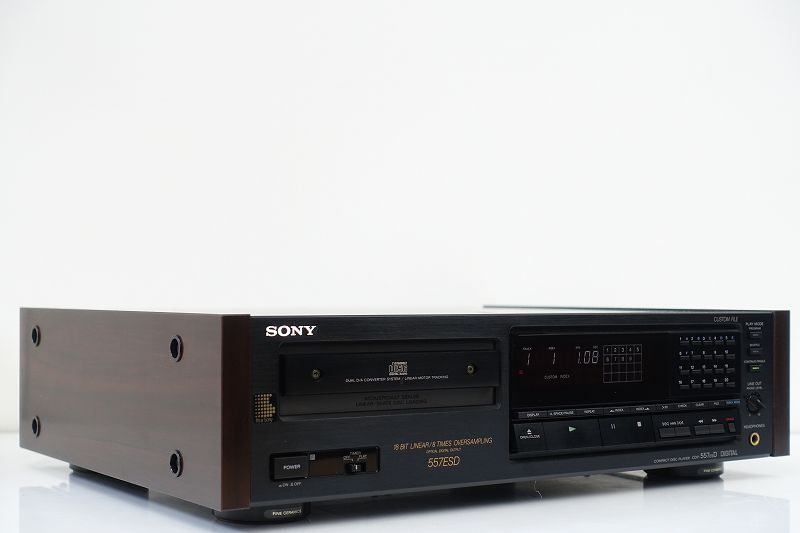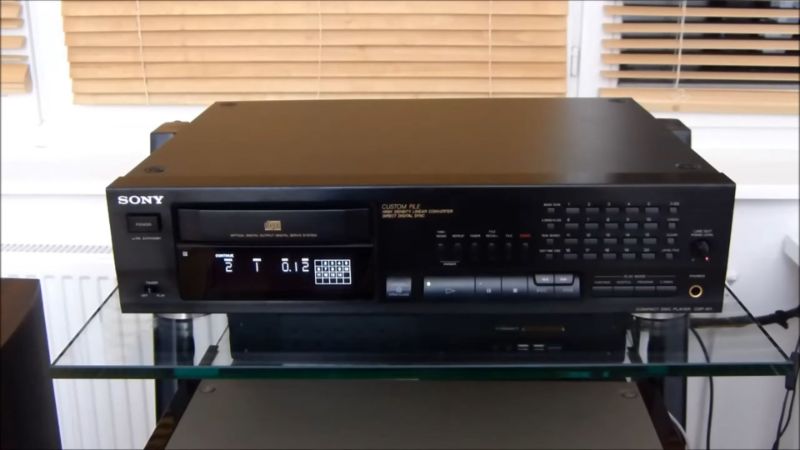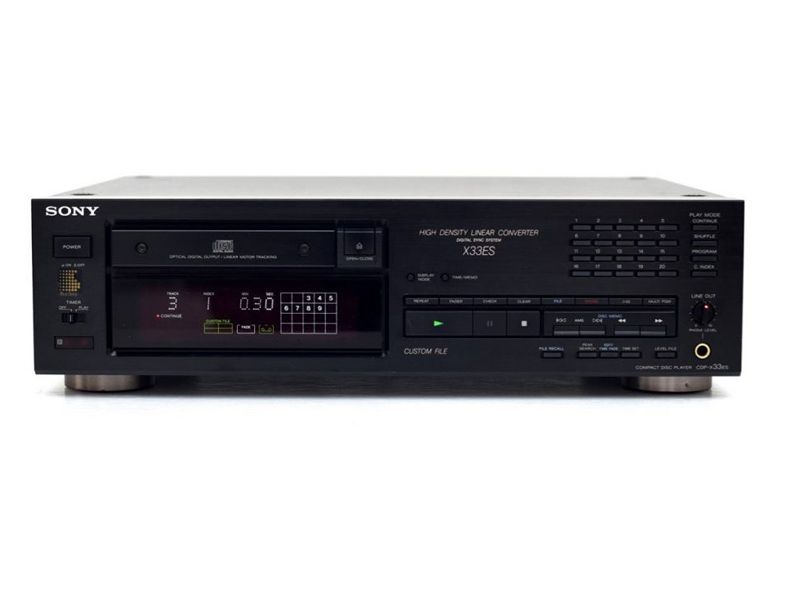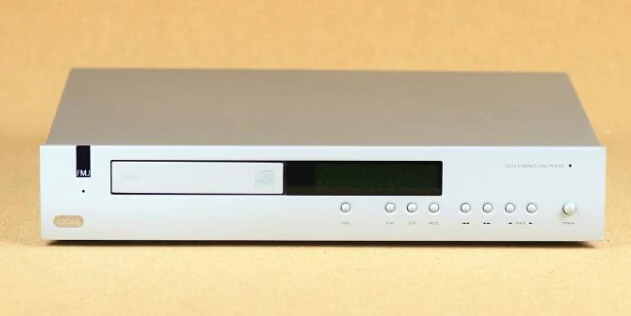Philips, the inventor of the Compact Disc system, has naturally been at the forefront of following advances touching every level of the production process, from digital encoding through master disc preparation and processing to final pressing and packaging. Philips has also taken on the task of promoting the European sector in its battle against the nearly overwhelming competition from the Far East when it comes to creating and manufacturing CD players.
Philips CD players have been selling successfully from their first appearance in March 1983, and businesses like Meridian and Mission have consistently chosen Philips models as the foundation for improvements of their own design. The exceptional sound quality associated with their innovative approach of over-sampling at four times the conventional frequency, which has reduced noise levels and allowed the use of hybrid digital and analogue filtering, has been a strong selling point. All the discussion over the last year has been about CD player price cuts, with the inference that Far Eastern producers will easily undercut European manufacturers. Philips, on the other hand, has been aggressively developing new components that appear to give their latest series of players a clear quality advantage over the competition. The simplest version, the Philips CD150, reviewed here, offers a level of performance at £229 that should appeal to a wide range of purchasers.
The lower weight of the Philips CD150 compared to its very similar looking predecessor, the Philips CD104, was my first surprise (reviewed in November 1984). The use of polystyrene for much of the casing and a glass-fibre reinforced chassis instead of the old diecast aluminium chassis accounts for the majority of the weight reduction from 7kg to an incredible 3kg. However, a new lens architecture designed for the new Philips CD1O battery portable has reduced the weight and size of the lens unit, and even the circuit boards are smaller. Only the Track and Index numbers are displayed by default; however, by pressing the Time/Track key, this may be altered to show track elapsed time. Both displays should be available at the same time, in my opinion.
The pause count-down display of P.02, P.01, P.00 at the start of each track, on the other hand, allows the user to anticipate the start of the music or go into Pause mode and make a disc-jockey kind of beginning on cue. The display shows the total number of tracks on the disc when you initially load it and close the drawer, but tapping the Time/ Track button alters it to show the disc’s total playing time. The drawer has been modified, and it now glides in and out smoothly. There are only a few working controls, but several of them are dual-function, making the machine quite versatile once the instructions have been thoroughly read and understood.
The number must be set by tapping the Previous and Next track-skip buttons to begin at a specific track. If this procedure is performed while the machine is in play, it waits 2 seconds before proceeding to the selected track and continuing to play. Index numbers (encoded on only a few operatic and orchestral CDs so far) can also be selected using this method, but the Time/ Track switch must be used to bring up the Index number display. To get to Track 3 Index 02, for example, use the Previous/Next keys to pick Track 3, then hit Time/ Track and then use the Next key to select Index 02 (all within 2 seconds). The Reverse and Forward rapid search buttons are straightforward to use.
Depending on how long the button is held down, the laser tracks inwards or outwards over the disc at three speeds. The music’s sound is heard at the first two speeds, but it fades away (and becomes incomprehensible) at the fastest speed. Setting up each desired number with the Previous/Next keys and then hitting the Program/Review button is how you program a specific sequence of track numbers. In memory, up to 20 track numbers can be saved, but they must all be unique.
The Philips CD150 includes plugin connectors instead of captive mains and phono signal leads, like on earlier Philips players, and comes with a high-quality phono-to-phono cable. A Remote connector is featured on the back panel, and Philips will be selling an EM2000 remote control transmitter/receiver unit soon. When used with compatible Philips midi systems, the CD150 can be controlled remotely as well. Although there is no headphone jack or output level control on this model, other new Philips models in the series, such as the CD350, will include headphones. Rubber feet are installed, and an extra set of feet can be placed on if more bottom clearance is needed.
The technical capabilities of this Philips player were impressive. The flat frequency response illustrated in Fig. 1 is now conventional among well-designed CD players, but the crosstalk plot sets new benchmarks, staying below – 100dB or better throughout the 20-20,000Hz range. Similarly, the signal-to-noise ratio was I 05d B unweighted and 1 I 6d B weighted. The 0.003 percent peak distortion value was validated, which is far better than most amplifiers can attain. Figure 2 depicts the symmetrical response to a ‘kHz square-wave produced by Philips circuitry with extremely low ripple.
As a result of all of this, the subjective sound quality was outstanding. I played a variety of CDs and was always amazed by the perspective depth, warm and well-defined bass, and a limpid purity in the treble – all of which were in stark contrast to the dry chromium-plated edge generated by certain early players. While the Philips CD150’s additional spaciousness made symphonic music sound more realistic, the effect on voices was a roundness and naturalness of tone with an uncanny presence. But I’m not going to go on: suffice it to say that Philips has been working hard on CD player improvements that have resulted in actual acoustic improvements.
The Philips CD150 has little frills in terms of operation, yet it does fundamental tasks quickly and correctly. Track I took an average of 3 seconds to start, and Track 15 took an average of 5 seconds. The review machine never mistracked over extended trials, and error correction on the standard test discs was 100 percent secure. The machine’s vibration resistance was amazing, and I was able to play it on its side or upside down (due to advancements in the battery portable model?). The mechanical noise during play was a high-pitched humming, but it was not as intrusive as it is on most CD players.
However, I return to the issue of musical reproduction quality: Except for a few top-of-the-line versions, the Philips CD150 can compete with the best CD players from its time. At £229, it has to be the best value for money on the market. The more advanced players in the Philips series may have more features, but it won’t be easy to find a player that can beat the Philips CD150 in terms of pure sound.







